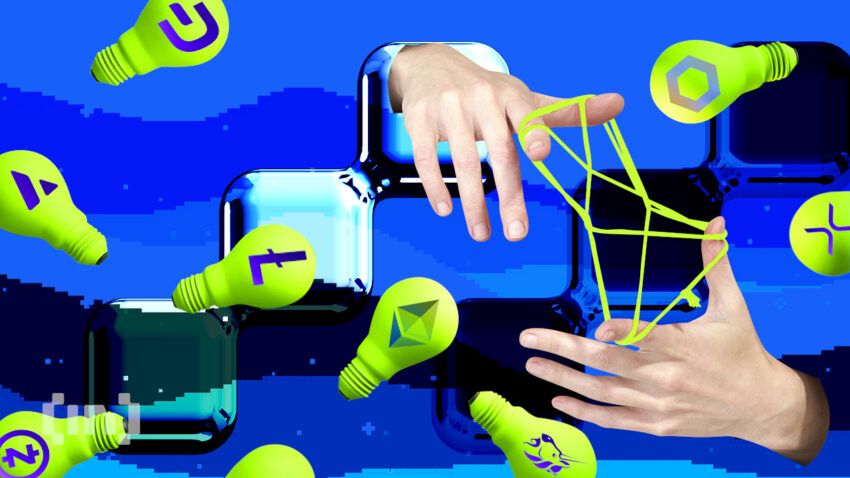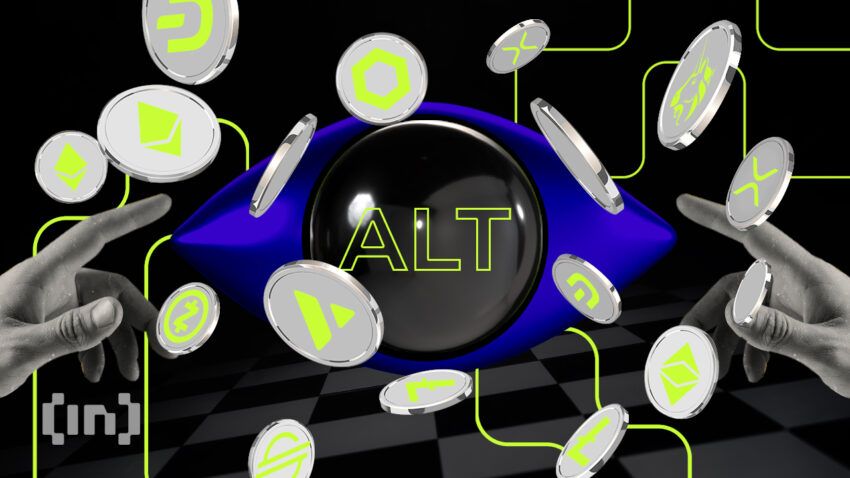Bitcoin’s debut in 2009 marked the beginning of the cryptocurrency era. So popular was the asset that its name became synonymous with cryptocurrency. Soon, alternative coins (altcoins) sprung up to compete against bitcoin in the crypto markets. So, what are altcoins? How do they differ from Bitcoin? What else do they bring to web3? Here’s what you need to know.
Want to get technical analysis on altcoins everyday? Join BeInCrypto Trading Community on Telegram: read TA, discuss crypto & get answers to all your questions from PRO traders & experts! Join now
Buy altcoins in minutes with as little as $10 on Kraken exchange
Methodology
Our method for selecting the top platforms to purchase altcoins was methodical and conducted over a period of six months. This process is peer-reviewed and fact checked to ensure accuracy. Our main requirements for selecting the top platforms required exchanges to have an altcoin selection. Beyond this, some of the other requirements are:
- Fees
- Features
- Availability
- Reputation
- Safety
Coinbase
As perhaps the second most prominent exchange on the market, Coinbase makes the top selection for platforms offering altcoins for a few reason. Coinbase has a reputation for compliance, it operates both a brokerage and an exchange, and allows customers to receive lower trading fees via subscription.
Kraken
Primarily known for its derivatives products, Kraken is also well known for its altcoin selection and trading features. Customers can enjoy a host of services, including earn products, futures trading, advanced trading features, and much more.
YouHoder
What YouHodler lacks in altcoin selection, it makes up for in altcoin earn products. On YouHodler, customers can deposit their crypto to earn yield. The platform’s assets are secured by Ledger Vault, and uses CipherTrace and Elliptic to monitor all transactions for malicious activity.
eToro
Many users prefer eToro as a financial services platform because of its user-friendly features. On the platform users can not only trade altcoins, but stocks and options as well. Its social trading feature also makes it an excellent option for less experienced traders.
CoinEx
CoinEx is an extremely versatile platform that caters to a global group of users in over 200 countries and in 16 different languages. It has a vast selection of altcoins, offering more than 800, and at low fees around 0.2%. Traders can also take advantage of its derivatives and earn products.
Bybit
Having one of the lowest spot trading fees to offer, at 0.1%, Bybit is another top choice for exchanges to trade altcoins. It has wide availability, supporting more than 160 countries, and a vast altcoin selection, listing more than 1,160 cryptocurrencies.
To learn more about BeInCrypto’s Verification Methodology, visit the following link.
Where to buy altcoins?
Before we dive into the details of altcoins as an asset class, here is a brief list of platforms where you can scoop up some alternative cryptocurrencies.
Coinbase
Coinbase is the most prominent U.S. based exchange. It operates both an exchange and a brokerage, so users select their preferred platform according to their specific needs. Coinbase also operates a custodial service, proprietary blockchain (Base), non-custodial wallet, and a multitude of other services.
YouHodler
YouHodler is not only a crypto exchange, it is also a popular platform for utilizing crypto collateralized loans. Users can exchange their crypto for an assortment of fiat currencies. YouHodler customers can also deposit select cryptocurrencies to earn yield on their idle crypto.
eToro
eToro is a popular social trading app that is based in the U.S. Users are able to copy the trades of expert traders. eToro also allows customers to trade stocks and options in addition to crypto.
Don’t invest unless you’re prepared to lose all the money you invest. This is a high-risk investment and you should not expect to be protected if something goes wrong.
Cryptocurrency is offered by eToro USA LLC (“the MSB”) (NMLS:1769299) and is not FDIC or SIPC insured. Investing involves risk
CoinEx
CoinEx is a diverse platform, serving over 200 countries in 16 different languages. Some of its services include spot trading on over 800 cryptocurrencies, futures and margin trading, crypto loans, and the ability to earn compound interest on your crypto.
What are altcoins?

Altcoins are alternative cryptocurrencies to Bitcoin. They are also often described as other digital currencies besides Bitcoin and Ethereum. Thousands of altcoins exist in the crypto space and come in various forms. Altcoin season refers to a period when alternative cryptocurrencies experience price surges and outperform Bitcoin.
While some digital currencies are serious products, some sprung up as memes and joke coins, gaining popularity through online influencers and often with the help of Reddit threads. Some examples of altcoins are Litecoin, Dogecoin, and Ripple.
It’s worth noting that Bitcoin commands a 53.7% share while altcoins take up 46.3% of the total crypto market cap. These alternative digital currencies use similar technology to Bitcoin and are all blockchain-based. The differences are found in the features and use cases.
Types of altcoin

There are altcoins for every investor as developers design more digital assets guided by their vision of the ideal coins. Altcoins take different categories as new ones enter the market with new solutions. The following are common categories of altcoins.
Stablecoins
Stablecoins were created to minimize price volatility in crypto and maintain a stable value. They are usually pegged to a fiat currency or other stable asset. Examples include Tether and USDC. Tether (USDT) pegs on USD to ensure its value remains stable, providing a haven for investors during market downturns. While Tether has faced its share of controversy, including allegations of price manipulation and regulatory legal fights, USDT remains the world’s largest stablecoin with over $109 billion in assets.
USDC is also pegged to the US dollar. The stablecoin runs on the Ethereum blockchain and is fully collateralized.
Tokens
Tokens are digital assets built on top of existing platforms like the Ethereum blockchain. They represent a share in a company, a physical asset, or a certain service.
The classification of tokens is unclear as their definitions and characteristics are evolving. For example, security tokens represent ownership of an asset.
Like traditional fiat currency, payment tokens act as a medium of exchange. Utility tokens give holders access to a specific product or service or facilitate community governance of a protocol or platform. Tokens mostly incentivize users to participate in a platform or ecosystem by granting access to certain features or functionality.
Mining-based and other coins
A crypto coin is any crypto that has its own standalone blockchain. So, bitcoin (BTC) is a “coin,” as is ether (ETH) and ADA (the coin built for the Cardano altchain). Coins must be exchanged through crypto exchanges due to the fact they are built on different, non-standardized code protocols.
Mining-based coins run on proof-of-work (PoW) consensus’ and arise through mining. The process involves miners competing using powerful computer systems to solve complex equations and add new blockchain blocks. As a result, miners earn rewards in the form of new coins.
Ethereum uses the Ethash algorithm, where miners get new Ethereum coins as rewards for adding new blocks to the blockchain. Litecoin uses the Scrypt algorithm, whereas Monero uses the CryptoNight algorithm for mining.
Memecoins
Memecoins come about as a joke or for entertainment purposes. They get inspiration from popular internet memes and have little to no intrinsic value. Memecoins originally mocked or satirized the hype and perceived absurdity of the broader cryptocurrency market.
Dogecoin is a well-known example of memecoin. It came about in 2013 as a parody of the then-popular Bitcoin. The “Doge” internet meme, which features a Shiba Inu dog and Comic Sans text, influenced its creation. Despite its origins, Dogecoin quickly gained a following through influencer endorsement from the likes of Elon Musk.
The Shiba Inu coin, which uses the Doge meme and SafeMoon, is also a memecoin. However, investors and traders take Shiba Inu less seriously than doge. Its value is highly speculative and subject to sudden changes.
The good side and bad side of altcoins

It’s paramount to note that the past performance of cryptocurrency doesn’t guarantee future results. Here are the potential benefits and drawbacks of altcoins:
Benefits
- Innovation: Altcoins introduce new features and utilities that are not available with Bitcoin or other established cryptocurrencies
- Diversification: Investing in various altcoins can help to diversify a portfolio and reduce the potential risk
- High returns potential: Some altcoins have seen significant price appreciation in the past, providing investors with the potential for high returns.
Drawbacks
- Volatility: The prices of altcoins are highly volatile, making them risky investments.
- Lack of regulation: The cryptocurrency market is not regulated as traditional financial markets. It is challenging for investors to assess the risk of an investment.
- Lack of adoption: Many altcoins face challenges in gaining mainstream acceptance and do not realize increased value.
- Scams: There are several scams and projects with no real use case in the altcoin market. Carrying out research and understanding the underlying technology and the team behind it is paramount when trading altcoins.
What are the best altcoins?
To a large extent, the best altcoins depend on personal preference, risk tolerance, and investment goals.
Some altcoins have witnessed significant price appreciation, but past performance doesn’t guarantee future results. The crypto market is volatile, and altcoin prices often fluctuate.
Some altcoins have withstood the time test, showing potential regarding technology, adoption, community, and market capitalization. Looking at the project or protocol behind a coin or token is imperative. Here are some details on some of the best altcoins.
1. Ether
Ethereum is a blockchain that allows developers to build decentralized applications (DApps) and smart contracts. Its native cryptocurrency, Ether (ETH), settles transaction fees and computational services on the blockchain network. It is the second largest cryptocurrency after Bitcoin by market capitalization. Ethereum has the largest community and ecosystem of all altcoins, integrating thousands of DApps and ERC-20 tokens.
2. Litecoin
Litecoin is the “silver to bitcoin’s gold.” The network was launched as a Bitcoin fork in 2011. Some key differences include faster block times and a different mining algorithm. Litecoin has been around for a long time and has a solid track record and a large community of developers. LTC posts a higher number of transactions per second (TPS) than Bitcoin, making it suitable for small and fast transactions. Many crypto users hold LTC due to its cheap and efficient nature.
3. Ripple (XRP)
Ripple is an exchange and remittance network created by Ripple Labs Inc. It runs on a distributed open-source protocol that accepts tokens representing fiat currency, cryptocurrency, commodities, or other value units. XRP, Ripple’s native coin, bills itself as a fast, environmentally sound digital asset that can facilitate quicker and more affordable cross-border transactions than currently offered by traditional banking services.
4. Bitcoin Cash (BCH)

Bitcoin Cash is a fork of the Bitcoin blockchain that came in 2017. It has larger block sizes than Bitcoin, allowing faster transaction times and lower fees. Bitcoin cash serves as peer-to-peer electronic cash, a utility originally envisaged for, by unrealized by, the original bitcoin (BTC). Like the first crypto, the bitcoin cash protocol ensures scarcity: there will never be more than 21 million BCH coins.
5. Cardano (ADA)
Cardano is a smart contract platform that delivers more advanced features than previously developed protocols. It runs on a proof-of-stake consensus algorithm and is the first blockchain platform in the Haskell programming language. The Cardano blockchain has two layers. The Cardano Settlement Layer (CSL) runs the ADA cryptocurrency, and the Control Layer runs the smart contracts.
6. EOS.IO (EOS)
EOS.IO is a blockchain platform designed to allow the development and deployment of decentralized applications (DApps) and smart contracts. The EOS.IO platform uses a consensus algorithm called delegated proof-of-stake (DPoS). It aims to provide faster and more efficient transaction processing than other blockchain platforms.
EOS.IO runs on its cryptocurrency, EOS, which helps pay for the resources to run DApps and smart contracts on the platform. EOS is also a governance token that allows holders to vote on proposals and elect block producers.
7. Polkadot (DOT)
Polkadot (DOT) is a multi-chain layer-0 platform that enables interoperability between blockchain networks. The network aims to improve energy efficiency, security, governance, and scalability within the web3 ecosystem.
Polkadot allows holders to vote among the governance tokens and elect validators responsible for validating transactions and maintaining the network. DOT is the native crypto; it supports staking and facilitates network governance and para-chain bonding.
8. Chainlink (LINK)
Chainlink (LINK) aims to connect smart contracts on the blockchain with real-world data. It is a decentralized network of oracles that provide data from various sources, such as APIs and IoT devices.
Chainlink allows for the creation of more complex and powerful smart contracts. In addition, Chainlink uses a proof-of-stake (PoS) consensus algorithm, which allows token holders to stake their tokens and earn rewards. The network demonstrates clear utility with organizations, including FedEx and AccuWeather, currently using Chainlink as a data verification platform. LINK, the native crypto of the Chainlink oracle network, supports staking and plays a major role in securing the network.
9. Binance Coin (BNB)
BNB is the native of the Binance exchange-the largest cryptocurrency exchange in the world. Binance Coin helps users pay transaction fees on the Binance exchange and offers them discounts.
Binance Coin is a utility coin and entitles users to participate in the Binance Launchpad platform and purchase other cryptocurrencies. Recent market sentiments suggest the BNB can maintain its price footing despite a certain amount of FUD (fear, uncertainty, and doubt) around the Binance exchange. This includes an accusation by Forbes in late February 2023 claiming that the cryptocurrency exchange misuses customer funds similarly to FTX.
Are altcoins safe to invest in?
Investing in altcoins, like any investment, comes with a degree of risk. While some altcoins have the potential to provide high returns, it’s vital to remember that the cryptocurrency market is highly volatile, and prices fluctuate regularly. As such, conducting thorough research before investing in an altcoin is crucial.
We recommend joining crypto communities and groups which give reputable crypto trading signals, such as our BeInCrypto free premium Telegram channel. Learning basic technical analysis and keeping note of price predictions and key market sentiments relevant to the crypto you are interested in is also worthwhile. As a precaution, always diversify your portfolio, and don’t invest more than you can afford to lose.
Frequently asked questions
Altcoins can be a good investment for some people, as they have the potential to provide high returns. However, investing in any cryptocurrency, including altcoins, comes with risk. The cryptocurrency market in general is speculative, and can be influenced by many factors, including market sentiment, adoption, and regulatory changes.
Ethereum is an altcoin as it launched in 2015 long after BTC. However, some crypto users define altcoins as assets which aren’t bitcoin or ether. Ether is regarded as the second most valuable and widely-used cryptocurrency. The Ethereum network is also a smart contract blockchain platform on which developers can build decentralized applications (DApps).
Altcoin examples include litecoin (LTC), bitcoin cash (BCH), chainlink (LINK), and binance coin (BNB). According to CoinMarketCap, there are more than 21,000 altcoins, with a total market cap of more than $1.1 trillion.
Some altcoins are legitimately exciting offerings linked with innovative and disruptive crypto projects. Many of them are built with the intention of improving the limitations of bitcoin, offering faster transaction processing times, greater security, and other advantages. However, lots of altcoins will likely fade out. Many have reputations of being “pump and dump” type scams, rather than offering legitimate utility or value.
You can buy altcoins from any cryptocurrency exchange. The exchange platform allows you to buy, sell, store, and trade different cryptocurrencies. Some popular exchanges offering various altcoins include Binance, Coinbase, and Kraken. Choosing a particular exchange involves researching its fees, supported coins, and security measures.
Disclaimer
In line with the Trust Project guidelines, the educational content on this website is offered in good faith and for general information purposes only. BeInCrypto prioritizes providing high-quality information, taking the time to research and create informative content for readers. While partners may reward the company with commissions for placements in articles, these commissions do not influence the unbiased, honest, and helpful content creation process. Any action taken by the reader based on this information is strictly at their own risk. Please note that our Terms and Conditions, Privacy Policy, and Disclaimers have been updated.









